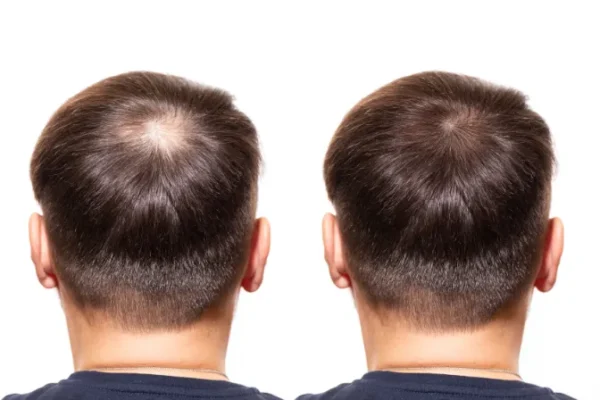Elite Hair Centers
We know that choosing a hair restoration provider is an important decision. At Elite Hair Centers, our unique dermatology and plastic surgery team is dedicated to delivering exceptional results with expertise and passion. This is what sets us apart from the competition.
Traction Alopecia
Traction alopecia is a form of hair loss resulting from prolonged or repetitive tension on hair follicles. Although it can occur anywhere on the body, it is most commonly observed along the frontal and temporal scalp due to traction hairstyles, such as braids, hair weaves, and tight ponytails or buns. Other situations that can cause excessive tension on hair follicles and lead to this type of hair loss include wearing hair extensions and the Sikh practice of tightly twisting long hair on the scalp under a turban. When hair is tightly braided for extensions, the area of hair loss may follow a curved or linear pattern, not necessarily limited to the frontal hairline.
Traction on the hair follicle is believed to cause perifollicular inflammation, which can initially be asymptomatic or manifest as folliculitis (scalp pimples). Over time, affected individuals may notice reduced hair density in impacted areas. Eventually, hair follicles become miniaturized. This process is initially nonscarring and reversible if traction is removed; however, with persistent traction, follicle atrophy occurs and damage becomes permanent. The fringe sign, characterized by the retention of miniaturized hairs along the anterior margin of the hair loss area, can be a diagnostic clue (these hairs are typically not under traction in the hairstyle).
Patients might not recognize traction alopecia as the cause of their hair loss and may have difficulty accepting the diagnosis. Educating patients on alternative hairstyling practices that eliminate sustained traction on susceptible hairs is the first step. Additional hair-damaging practices, such as chemical relaxers and high heat (curling or flat irons), should also be avoided. Intralesional steroid injections and topical or oral minoxidil may stimulate hair regrowth, while surgical hair restoration is an option if hair fails to return.
Traction alopecia is generally classified as a mechanical type of hair loss, alongside pressure-induced and traumatic alopecia. These conditions may result from traumatic injuries or prolonged pressure on the scalp, such as in cases where a person is immobilized for an extended period, leading to reduced blood supply and subsequent hair loss.

TESTIMONIALS

Before & After Gallery
*Individual results may vary.

